When dental emergencies strike, act quickly to ease pain and prevent further damage. Rinse with warm saltwater for toothaches and apply a cold compress to reduce swelling. Remember to save any tooth pieces and seek immediate dental care for broken teeth. Having essential supplies like dental floss and cotton swabs can help in emergencies. Stay prepared and calm to handle unexpected dental issues effectively. Your quick actions can save your tooth and alleviate discomfort.
Key Takeaways
- Immediate actions for pain management are crucial in dental emergencies.
- Essential supplies like dental floss and cotton swabs aid in emergency treatment.
- Effective communication strategies help calm anxious patients during emergencies.
- Follow-up care and preventive measures are vital for optimal recovery and oral health.
- Quick action and preparedness can make a significant difference in emergency dental situations.
Common Dental Emergency Scenarios
When faced with common dental emergencies, quick action is essential in minimizing pain and preventing further damage. For toothache remedies and temporary solutions, rinsing your mouth with warm saltwater can help alleviate discomfort. Applying a cold compress on the outside of your cheek near the affected tooth can also reduce swelling and numb the area. Over-the-counter pain medications like ibuprofen can provide relief until you can see a dentist.
In the case of a broken tooth, it's vital to act fast. Rinse your mouth with warm water to clean the area. If there is bleeding, apply gauze for around 10 minutes or until the bleeding stops. Save any tooth fragments and see a dentist immediately. Avoid chewing on that side of your mouth to prevent further damage. Emergency procedures may involve dental bonding, a crown, or in severe cases, a root canal. Remember, swift action can make a difference in saving your tooth and easing your discomfort.
Essential Supplies for Emergency Kits
To prepare an effective dental emergency kit, gather essential supplies that can help address common dental issues promptly and efficiently. When assembling your kit, consider including items that are important for emergency procedures and trauma management. Below is a simple table outlining the essential supplies for your dental emergency kit:
| Item | Purpose | Quantity |
|---|---|---|
| Dental floss | Helps dislodge food stuck between teeth | 2 rolls |
| Cotton swabs | Used for applying medication or pressure | 1 pack |
| Temporary filling material | Temporarily fills cavities or lost fillings | 1 kit |
These items are fundamental for managing dental emergencies until professional care can be sought. Remember, having the right supplies readily available can make a significant difference in handling unexpected dental issues effectively. Be prepared and stay calm during emergencies by ensuring your emergency kit is well-equipped and easily accessible.
Immediate Actions for Patients' Comfort
For immediate relief and comfort, prioritize addressing patients' dental pain and discomfort promptly. Pain management is essential in dental emergencies. Administer over-the-counter pain medication like ibuprofen or acetaminophen to help alleviate the pain until the patient can see a dentist. Additionally, recommend applying a cold compress to the outside of the mouth or cheek near the affected area to reduce swelling and numb the pain temporarily.
Encourage patients to maintain good oral hygiene even during a dental emergency. Suggest gently rinsing the mouth with warm salt water to help cleanse the area and reduce bacteria. Advise patients to avoid placing aspirin directly on the gums or teeth as this can cause burns to the soft tissues.
Communication Strategies With Anxious Patients
To help anxious patients feel more at ease, actively listen to their concerns and provide clear, reassuring explanations about the treatment process. Building trust with your patients is essential in calming their anxieties. Engage in open dialogue, answer questions patiently, and acknowledge their fears. Utilizing calming techniques such as deep breathing exercises or playing soothing music in the waiting area can create a more relaxing environment. Remember, your demeanor and approach can greatly impact how patients perceive their dental experience.
| Building Trust | Calming Techniques | Communication Tips |
|---|---|---|
| Show empathy and understanding | Encourage deep breathing exercises | Use simple language and avoid dental jargon |
| Provide personalized care | Play soothing music in the waiting area | Maintain eye contact and a calm tone of voice |
| Be transparent about procedures | Use aromatherapy to create a calming atmosphere | Allow patients to express their concerns without interruption |
| Follow up with patients after appointments | Offer stress balls or fidget toys for relaxation | Offer reassurance throughout the treatment process |
Follow-Up Care and Preventive Measures
Maintain consistent communication with patients to guarantee they understand the importance of follow-up care and preventive measures after their dental treatment. Post treatment precautions are essential to ensure proper healing and avoid complications. Make sure patients know how to care for any treated areas, such as avoiding hard foods or practicing good oral hygiene to prevent infections. Additionally, stress the significance of long-term maintenance to preserve the results of their dental treatment. Encourage regular dental check-ups and cleanings to monitor their oral health and address any issues promptly. Provide clear instructions on any medications prescribed and follow any recommended dietary restrictions. By following these guidelines, patients can help ensure the success of their treatment and maintain a healthy smile for years to come. Remember, proactive care is key to preventing future dental emergencies and maintaining an excellent oral health.





